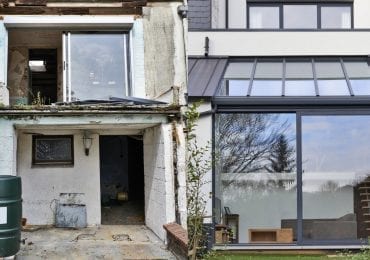Cost-Effective Options When Renovating a Rental Property
Whether you are renovating your rental property in order to increase its value or you are looking for ways to make it more attractive to potential tenants, you will certainly want to keep the costs down as much as possible. While you certainly do not want to cut corners in order to save dollars, there are some steps that you can take to help keep the costs down when renovating your property. Here is a look at a few options to consider.
Option #1: Choose Wisely
When making renovations to your rental property, it is important to choose wisely when determining the types of renovations you will make. In other words, the best renovations are those that do not cost too much to complete, but that will add value to your property. Simple steps such as changing out the hardware on cabinetry or installing new hardwood flooring can give your property a significant boost in the eyes of potential renters. Major renovations, such as installing an extra bathroom or completely gutting the kitchen, may not be wise investments in terms of adding overall value to your property.
Option #2: Do Your Own Work – But Know Your Limits
Doing your own work can help to significantly reduce the cost of renovating your property, but it is also important for you to know your limits. Simple tasks such as switching out cabinet faces or painting a room may be tasks that you can handle with ease. Cutting out the cost of labor can significantly decrease the cost of completing these renovations. When it comes to installing a new floor or taking out walls in order to create an open floor plan, however, you may not be up to the task. Ultimately, attempting to complete certain renovations on your own may become more costly if you are not sure about what you are doing.
Another option is to work side-by-side with a contractor or to complete only certain parts of the project. For example, before taking out a wall, you may want to contact an expert to ensure the wall can be safely removed without damaging the structure. Similarly, while you may be capable of completing some of the grunt work involved with the renovation, you may want to contact an expert to do the finishing in order to ensure it is all aesthetically pleasing when complete.
Option #3: Consider a Home Improvement Mortgage Loan
Home improvement mortgage loans can help you pay for renovations over time, making it more cost-effective as you spread the cost out or roll it into your home mortgage loan costs. Some possible options for home improvement loans include:
- Fannie Mae HomeStyle Loan – allows you to buy a property in need of repairs or to refinance an existing home to pay for renovations.
- FHA 203(k) Loan – requires a lower credit score than the HomeStyle Loan and has a cap of $35,000.
- Home Equity Loan or Home Equity Line of Credit (HELOC) – capped according to the equity that is built in the property.
You may also be able to use a standard home renovation loan or cash-out refinancing to pay for your renovations.

